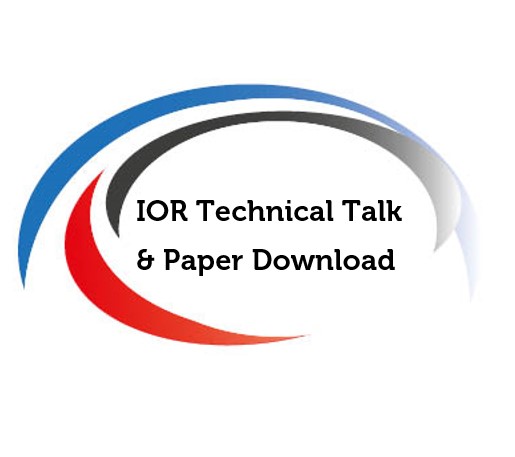-
Technical
Use of Flammable Refrigerants for Cooling
2 Dec 2021 16:00 to 17:00
Webinar
Register for your free place here
All those registering for the webinar will receive a recording of the broadcast even if they are unable to join the live broadcast
Download the Paper
Download the paper here.
Overview
Join us on the 2nd of December for this IOR Anniversary Celebratory Event.
On the 8th December 1899 the IOR was formed at a meeting chaired by R Leonard with 16 interested individuals. Initially known as the Cold Storage and Ice Association reflecting the early days of refrigeration in the UK, which was based on ice imports.
This celebratory meeting will take place online. You can join fellow RACHP professionals and hear an informal talk and take part in the discussion that will follow.
The Talk
Refrigeration history is interspersed with the use of flammable refrigerants. During the 19th century, many of the early inventions employed flammable refrigerants. Until the time when CFCs became commercialised about a quarter of smaller systems used a variety of different flammable refrigerants, including ethyl ether, ethyl chloride, methylene chloride, methyl formate and isobutane and the majority of industrial/commercial systems used ammonia. Whilst most of the refrigerants for smaller systems became substituted with CFCs, this was primarily due to mitigation of toxicity hazards, rather than ignition risks. As the Montreal Protocol came into force there were numerous studies assessing alternatives, including flammable HFCs and HCs. Initially, the domestic appliance sector briefly opted for R134a, but following the Greenpeace “Greenfreeze” campaign, virtually all European manufacturers adopted isobutane. From the early 1990s, HCs became used more widely in small commercial and intermittently in other subsectors. In parallel, refrigeration safety standards were revised and amended to reflect the use of this technology. A decade or two later, safety standards were modified again to include the 2L lower flammability safety classification, igniting the commercialisation of flammable HFCs; primarily the introduction of R1234yf in car AC systems and then R32 in air conditioners. The paper traces the use of flammable refrigerants through textbooks, technical articles and patents, from the middle of the 18th century to the present day, breaking it into four “eras”, mirroring the extent of use of flammables at the time.
The presenter
“Dr Daniel Colbourne specialises in environmental, performance and safety aspects of alternative refrigerants and systems. He works on behalf of various organisations and companies, including implementing agencies, manufacturers and end-users. He is a member of the UNEP Refrigeration Technical Options Committee and several BSI, CEN, ISO and IEC standardisation committees and working groups on refrigeration safety and is a member of the Institute of Refrigeration Technical Committee.”
By booking to attend this meeting you are agreeing to the IOR terms and conditions.
Sitemap
-
Membership
-
Technical
-
Environment
-
Education
-
Quick Links - Education and Careers
-
Qualifications and Apprenticeships
-
IOR E-Learning programmes
-
Careers Information and Resources
-
How does a fridge work?
-
Find Local Training
-
Presidents Fund for Education
-
CPD Resources for Technicians
-
FantasticPuzzles
-
masterclasses
-
All things STEM resources, ambassadors and more
-
-
Networking
-
Events
-
About
-
Shop
-

